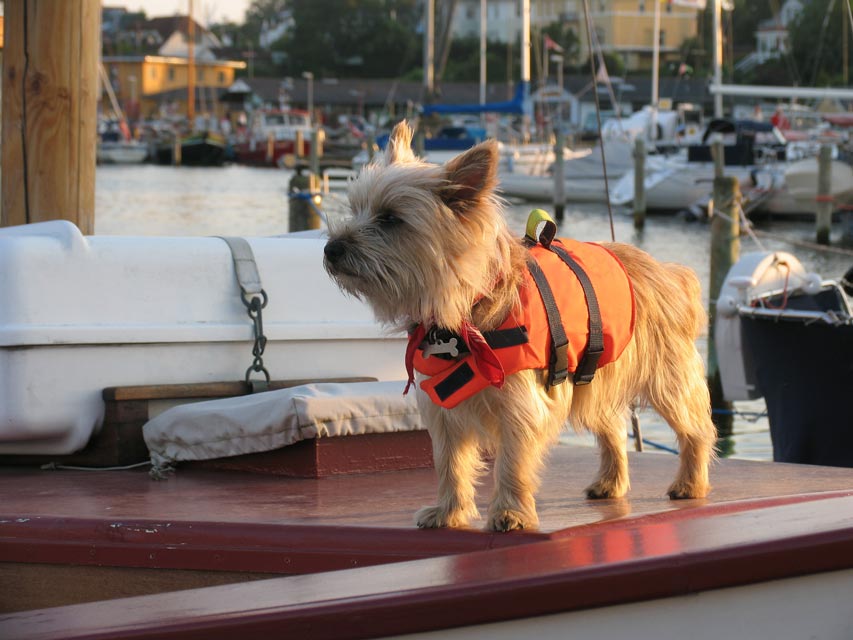- Home
- Summer Water Safety Tips for Dogs

Summer Water Safety Tips for Dogs

For many people and their dogs, summer means water. Whether it's hanging out at the beach or enjoying a pool at home, water and warm weather go hand in hand.
However, there are some things you should keep in mind about safety when it comes to having your dog around water.
Know Your Dog
Some dogs are naturally great swimmers. Others can be taught swim well. However, some dogs aren't as well-suited for swimming, and the dangers of water are greater for them. Brachycephalic dogs (those with short snouts) generally have more difficulty swimming safely because they don't take in air like dogs with long noses, and they should probably stay on land or in shallow water only.
If you're not sure whether your dog is a good swimming breed, as your vet.
Don't Assume Your Dog Can Swim
Dogs aren't exactly born knowing how to swim. While some dogs do take to it naturally and most dogs seem to instinctively know how to move their paws in water, some dogs are fearful or take longer to relax and get it right.
Never toss your dog into the water as a way of teaching him to swim. Not only is that dangerous but it can also create a fear of the water—and a lack of trust in you—that might be damaging for the future.
To teach your dog to swim, start with shallow water, such as that in a children's plastic pool or a shallow pond. First, let your dog get used to putting his feet in. A toy that floats can help with that.
Show your dog how to get in and out of the water by doing it yourself so he can see. Stay close, so your dog feels secure that he has help available if needed. This is the case with a pool too. Show your dog how to use the stairs and have him practice until you're sure he can do it. Of course, your dog should still not be around a pool unsupervised. A fence is the best idea.
Dogs can teach other dogs to swim so it can be helpful to recruit a canine pal that is already an excellent swimmer to teach your dog.
Use a Canine Life Jacket
Life jackets for dogs can help with water safety. You should consider keeping your dog in one until you're sure he can swim on his own. Also, keeping a life jacket on your dog while you're boating is a good idea.
Make Your Dog Rest Sometimes
Dogs that are having a ton of fun might not take time out to rest, and a tired dog could get into trouble while swimming. Monitor your dog while he's playing in the water and make him take breaks periodically.
Keep Fresh Water Available
As much as possible, try to keep your dog from drinking the water he's swimming in. This can be difficult, but keeping a bowl of fresh, clean water nearby and encouraging him to drink it often can help. Pool water containing chemicals can be detrimental if too much is ingested, and lakes and ponds can contain harmful bacteria.
Additionally, rinse your dog off with clean water after a swim, whether it's a pool or a natural body of water. That can help remove chemicals and bacteria from his body before he licks them off himself.
Make Sure Dogs Are Allowed
If you take your dog to a beach to swim, do your due diligence and make sure he's welcome there first. Many beaches don't allow dogs, and you want to be sure you're following the rules. If dogs are allowed, make sure you help to keep it that way by being prepared to clean up after yours and not allowing him to bother other beach-goers.

 Loading... Please wait...
Loading... Please wait...







